Colonial Singapore
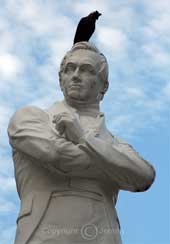 The heritage of Sir Stanford Raffles is that the well-organized city of Singapore which plays a leading role of its clear British architectural style. Different from Singaporean physical outlooks; Chinese, Malay, Indian, and etc; the assortment between arts and people make Singapore unique and interesting due to its historical background that goes against present's appearance. The heritage of Sir Stanford Raffles is that the well-organized city of Singapore which plays a leading role of its clear British architectural style. Different from Singaporean physical outlooks; Chinese, Malay, Indian, and etc; the assortment between arts and people make Singapore unique and interesting due to its historical background that goes against present's appearance.
As Sir Stamford Raffles had stationed the administrative offices in the north of Singapore and moved the business area to the south of the river, that superb plan worked well in the colonial era and still exists nowadays although Independence has been gained. It is the treasure that Singaporeans want it to last for it does represent the marks of history. Interesting colonial places are Empress Place, the Padang, the Esplanade, the Raffles's area, Bugis Street, City Center, Fort Canning, and Marina Center. Details of each interesting place are described in the following topics:
The Padang
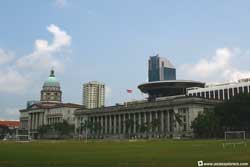 The Padang is the place where you can find several types of ancient architectural establishments as this area was a true representation of British colonialism. Here you can also see the Eurasian community gathering at the cricket club with no segregation taken into account. The Padang is a good place for a walk in the evenings with the sentiment of freedom as its reminiscent atmosphere helps depict the end of colonial rule The Padang is the place where you can find several types of ancient architectural establishments as this area was a true representation of British colonialism. Here you can also see the Eurasian community gathering at the cricket club with no segregation taken into account. The Padang is a good place for a walk in the evenings with the sentiment of freedom as its reminiscent atmosphere helps depict the end of colonial rule
The Esplanade
The Esplanade was in a plan of the reclamation of land; and is known as the shoreline park located in Marina East. As the government wanted to form Marina East to support the crowd that poured into this financial area; many hotels, shopping complexes, and high towers were constructed
City Center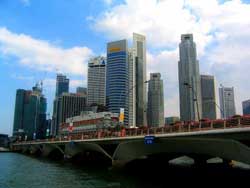
City Center, an area that consists of many interesting places such as Stamford House, Chinese Chamber of Commerce, Armenian Church, Asian Civilizations Museum, National Museum, Presbyterian Church, Wesley Methodist Church and etc
Fort Canning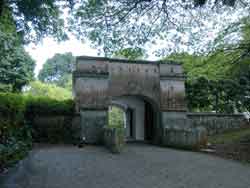
Fort Canning Hill is neighboring to the Armenian Church of St. Gregory the Illuminator. Fort Canning Hill was once known as Forbidden Hill, a place where people believed to be roamed by the ghosts of dead kings from the 14th century
Singapore River
 A place founded by Sir Stamford Raffles, tracing back to 1819 when Raffles' ship arrived on the northeastern bank of the Singapore River. Its scene was first a true rural area with myrtle covered all around the place. Moreover, numerous skulls were founded littered the riverbanks together with unwanted cargoes of Bugis pirates dumped there as well. A place founded by Sir Stamford Raffles, tracing back to 1819 when Raffles' ship arrived on the northeastern bank of the Singapore River. Its scene was first a true rural area with myrtle covered all around the place. Moreover, numerous skulls were founded littered the riverbanks together with unwanted cargoes of Bugis pirates dumped there as well. Soon after that Raffles signed the treaties with the local Malay leaders and set that area as the British entrepot. Successfully, his project turned out to be prosperous and soon he had to order land reclamation that was divided into 5 quays; Raffles Quay, Collyer Quay, Boat Quay, Clarke Quay, and Robertson Quay. By 1850s, the Singapore River was extremely crowded with European and Chinese merchants.
China Town
Singapore's real core is but Chinatown, where reminiscence of 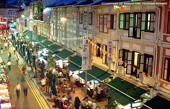 old days are stimulated under the architectural style of buildings constructed and shaped by Chinese immigrants.Numerous buildings in Chinatown have been demolished and renovated over these past thirty years. Nevertheless, it is still an attractive place to foot around though many of the original architectures have gone. It contains some of Singapore's most famous temples and there are plenty of restaurants and shopping centers. old days are stimulated under the architectural style of buildings constructed and shaped by Chinese immigrants.Numerous buildings in Chinatown have been demolished and renovated over these past thirty years. Nevertheless, it is still an attractive place to foot around though many of the original architectures have gone. It contains some of Singapore's most famous temples and there are plenty of restaurants and shopping centers.
Wak Hai Cheng Bio Temple
 Start your trip at Wak Hai Cheng Bio Temple would be great. Just walk down Boat Quay Road, then Lorong Telok Street and you will find this remarkable Chinese temple. It was built between 1852 and 1855 by Teochew fisherman in order to pay homage to supernatural spirits to protect seafarers. There are traditional gateways that would lead you to the courtyard where Chinese opera occasionally set to display music along the religious festivals. On the roof the pictures of mythological figures and human deities were drawn and painted beautifully. Start your trip at Wak Hai Cheng Bio Temple would be great. Just walk down Boat Quay Road, then Lorong Telok Street and you will find this remarkable Chinese temple. It was built between 1852 and 1855 by Teochew fisherman in order to pay homage to supernatural spirits to protect seafarers. There are traditional gateways that would lead you to the courtyard where Chinese opera occasionally set to display music along the religious festivals. On the roof the pictures of mythological figures and human deities were drawn and painted beautifully.Telok Ayer Street
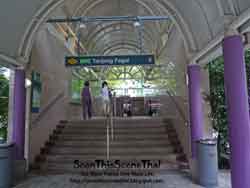
Telok Ayer is a very important street where many Chinese temples and clan offices are located. The first settlers here are Hokkiens who brought in their culture, food, customs, superstitions, festivals, and gods. They also built Thian Hock Keng Temple in dedication of queen in heaven; another place is Chong Wen Ke, the very first Chinese school; and the Hokkien Huay Kuan Association, the first original clan house in early Singapore.
Amoy Street & Ann Siang Hill
 A Chinatown's neighborhood where resided by poor and elderly people together with shophouses selling boutiques, wine, and other several things. Amoy Street was named for the Hokien-Amoy who once lived there while Ann Siang Hill was developed by Chia Ann Siang who opened many shophouses and recreation centers to serve Chinese community. Clan association has moved to Ann Siang Hill as of the crowd at Telok Ayer Street. Most of the buildings in this area were constructed between 1900 and 1940. If you would like to visit Ann Siang Hill, a stop at the Beaujolias Wine Bar, Frothy Tea Shop, and Lee Kun Store selling lion dance masks, is considered worthwhile. A Chinatown's neighborhood where resided by poor and elderly people together with shophouses selling boutiques, wine, and other several things. Amoy Street was named for the Hokien-Amoy who once lived there while Ann Siang Hill was developed by Chia Ann Siang who opened many shophouses and recreation centers to serve Chinese community. Clan association has moved to Ann Siang Hill as of the crowd at Telok Ayer Street. Most of the buildings in this area were constructed between 1900 and 1940. If you would like to visit Ann Siang Hill, a stop at the Beaujolias Wine Bar, Frothy Tea Shop, and Lee Kun Store selling lion dance masks, is considered worthwhile.
South Bridge Road
South Bridge Road was constructed in 1833 by Indian convicts. With the Indian convicts that once were there to  build the road, some of them have settled there and built up Indian community which resulted in the construction of Sri Mariamman Hindu Temple in 1823 but later was renovated. If you would like to visit this temple, don't be surprised if your shoes will be checked at the front door. Another Indian place in that area is Jamae Mosque built in 1826 by Chulia Indians. It was gazetted as a National Monument in 1974. And as same as Sri Mariamman Hindu Temple, shoes must be checked at the front door. build the road, some of them have settled there and built up Indian community which resulted in the construction of Sri Mariamman Hindu Temple in 1823 but later was renovated. If you would like to visit this temple, don't be surprised if your shoes will be checked at the front door. Another Indian place in that area is Jamae Mosque built in 1826 by Chulia Indians. It was gazetted as a National Monument in 1974. And as same as Sri Mariamman Hindu Temple, shoes must be checked at the front door.
Little India
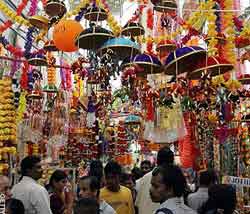 Little India is one of the most genuine districts in Singapore. The colorfulness and cheerfulness of this district derived from its being as a shopping arcade. Little India is located on Serangoon Road (built in 1828) from Rochor Canal to Levender Street.Just like Orchard Road, Little India is also subdivided, yet into 4 parts; Lower Serangoon Road; Central Serangoon Road; Upper Serangoon Road; and the Arab Quarter. Little India is one of the most genuine districts in Singapore. The colorfulness and cheerfulness of this district derived from its being as a shopping arcade. Little India is located on Serangoon Road (built in 1828) from Rochor Canal to Levender Street.Just like Orchard Road, Little India is also subdivided, yet into 4 parts; Lower Serangoon Road; Central Serangoon Road; Upper Serangoon Road; and the Arab Quarter.
Beyond Singapore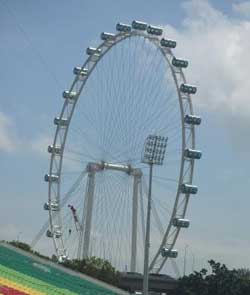
If further exploration is required, visiting some places beyond Singapore will grant your desire. The Malay Peninsula is a popular spot for tourists; Riau Islands is mostly visited by those who head to Indonesia; Batam Island, a two-thirds the size of Singapore; and Bintan Island, a most popular island in Riau.
|






 The heritage of Sir Stanford Raffles is that the well-organized city of Singapore which plays a leading role of its clear British architectural style. Different from Singaporean physical outlooks; Chinese, Malay, Indian, and etc; the assortment between arts and people make Singapore unique and interesting due to its historical background that goes against present's appearance.
The heritage of Sir Stanford Raffles is that the well-organized city of Singapore which plays a leading role of its clear British architectural style. Different from Singaporean physical outlooks; Chinese, Malay, Indian, and etc; the assortment between arts and people make Singapore unique and interesting due to its historical background that goes against present's appearance.  The Padang is the place where you can find several types of ancient architectural establishments as this area was a true representation of British colonialism. Here you can also see the Eurasian community gathering at the cricket club with no segregation taken into account. The Padang is a good place for a walk in the evenings with the sentiment of freedom as its reminiscent atmosphere helps depict the end of colonial rule
The Padang is the place where you can find several types of ancient architectural establishments as this area was a true representation of British colonialism. Here you can also see the Eurasian community gathering at the cricket club with no segregation taken into account. The Padang is a good place for a walk in the evenings with the sentiment of freedom as its reminiscent atmosphere helps depict the end of colonial rule


 A place founded by Sir Stamford Raffles, tracing back to 1819 when Raffles' ship arrived on the northeastern bank of the Singapore River. Its scene was first a true rural area with myrtle covered all around the place. Moreover, numerous skulls were founded littered the riverbanks together with unwanted cargoes of Bugis pirates dumped there as well.
A place founded by Sir Stamford Raffles, tracing back to 1819 when Raffles' ship arrived on the northeastern bank of the Singapore River. Its scene was first a true rural area with myrtle covered all around the place. Moreover, numerous skulls were founded littered the riverbanks together with unwanted cargoes of Bugis pirates dumped there as well.  old days are stimulated under the architectural style of buildings constructed and shaped by Chinese immigrants.Numerous buildings in Chinatown have been demolished and renovated over these past thirty years. Nevertheless, it is still an attractive place to foot around though many of the original architectures have gone. It contains some of Singapore's most famous temples and there are plenty of restaurants and shopping centers.
old days are stimulated under the architectural style of buildings constructed and shaped by Chinese immigrants.Numerous buildings in Chinatown have been demolished and renovated over these past thirty years. Nevertheless, it is still an attractive place to foot around though many of the original architectures have gone. It contains some of Singapore's most famous temples and there are plenty of restaurants and shopping centers. Start your trip at Wak Hai Cheng Bio Temple would be great. Just walk down Boat Quay Road, then Lorong Telok Street and you will find this remarkable Chinese temple. It was built between 1852 and 1855 by Teochew fisherman in order to pay homage to supernatural spirits to protect seafarers. There are traditional gateways that would lead you to the courtyard where Chinese opera occasionally set to display music along the religious festivals. On the roof the pictures of mythological figures and human deities were drawn and painted beautifully.
Start your trip at Wak Hai Cheng Bio Temple would be great. Just walk down Boat Quay Road, then Lorong Telok Street and you will find this remarkable Chinese temple. It was built between 1852 and 1855 by Teochew fisherman in order to pay homage to supernatural spirits to protect seafarers. There are traditional gateways that would lead you to the courtyard where Chinese opera occasionally set to display music along the religious festivals. On the roof the pictures of mythological figures and human deities were drawn and painted beautifully.
 A Chinatown's neighborhood where resided by poor and elderly people together with shophouses selling boutiques, wine, and other several things. Amoy Street was named for the Hokien-Amoy who once lived there while Ann Siang Hill was developed by Chia Ann Siang who opened many shophouses and recreation centers to serve Chinese community. Clan association has moved to Ann Siang Hill as of the crowd at Telok Ayer Street. Most of the buildings in this area were constructed between 1900 and 1940. If you would like to visit Ann Siang Hill, a stop at the Beaujolias Wine Bar, Frothy Tea Shop, and Lee Kun Store selling lion dance masks, is considered worthwhile.
A Chinatown's neighborhood where resided by poor and elderly people together with shophouses selling boutiques, wine, and other several things. Amoy Street was named for the Hokien-Amoy who once lived there while Ann Siang Hill was developed by Chia Ann Siang who opened many shophouses and recreation centers to serve Chinese community. Clan association has moved to Ann Siang Hill as of the crowd at Telok Ayer Street. Most of the buildings in this area were constructed between 1900 and 1940. If you would like to visit Ann Siang Hill, a stop at the Beaujolias Wine Bar, Frothy Tea Shop, and Lee Kun Store selling lion dance masks, is considered worthwhile. build the road, some of them have settled there and built up Indian community which resulted in the construction of Sri Mariamman Hindu Temple in 1823 but later was renovated. If you would like to visit this temple, don't be surprised if your shoes will be checked at the front door. Another Indian place in that area is Jamae Mosque built in 1826 by Chulia Indians. It was gazetted as a National Monument in 1974. And as same as Sri Mariamman Hindu Temple, shoes must be checked at the front door.
build the road, some of them have settled there and built up Indian community which resulted in the construction of Sri Mariamman Hindu Temple in 1823 but later was renovated. If you would like to visit this temple, don't be surprised if your shoes will be checked at the front door. Another Indian place in that area is Jamae Mosque built in 1826 by Chulia Indians. It was gazetted as a National Monument in 1974. And as same as Sri Mariamman Hindu Temple, shoes must be checked at the front door. Little India is one of the most genuine districts in Singapore. The colorfulness and cheerfulness of this district derived from its being as a shopping arcade. Little India is located on Serangoon Road (built in 1828) from Rochor Canal to Levender Street.Just like Orchard Road, Little India is also subdivided, yet into 4 parts; Lower Serangoon Road; Central Serangoon Road; Upper Serangoon Road; and the Arab Quarter.
Little India is one of the most genuine districts in Singapore. The colorfulness and cheerfulness of this district derived from its being as a shopping arcade. Little India is located on Serangoon Road (built in 1828) from Rochor Canal to Levender Street.Just like Orchard Road, Little India is also subdivided, yet into 4 parts; Lower Serangoon Road; Central Serangoon Road; Upper Serangoon Road; and the Arab Quarter. 